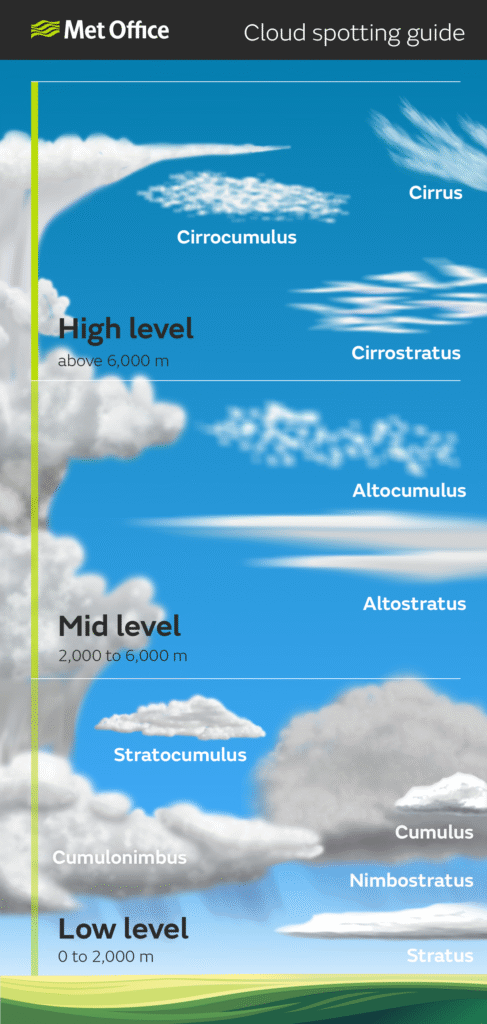Have you ever lain on the grass, watching the sky shift from cotton swirls to towering giants, and wondered—why do clouds look so different every time you see them?
Turns out, clouds are far more than poetic backdrops. They’re dynamic, critical players in our climate system. And they vary more across the globe than we might ever expect.
From colossal thunderheads in the tropics to thin, shimmering wisps over polar ice caps, clouds morph in shape, height, color, and behavior—not just with the weather, but depending on where you are on Earth.
When I first understood clouds weren’t “just clouds”
It started with a science fair in high school. My project? Basic cloud identification. But as I dug into satellite data and field photos, I stumbled across something odd: cloud types over oceans looked drastically different from those above land. Some towered like mushrooms; others layered like lasagna. The more I looked, the more complex it became.
That was my lightbulb moment. Clouds aren’t just the sky’s wallpaper—they’re fingerprints of a specific region’s climate and geography. They offer clues to the Earth’s energy balance, rainfall patterns, and even how heat gets distributed around the globe.
So, how varied are clouds really?
According to the World Meteorological Organization (WMO), there are 10 main types of clouds—known as “genera”—but the variety goes much deeper.
Here’s what decades of global observation and satellite data tell us:
- Clouds are everywhere—but not equally. Roughly two-thirds of Earth is covered in clouds at any given moment. But location matters. Over 70% of the ocean sky stays cloudy, compared to just under 60% over land.
- Height changes everything. Tropical cloud tops can soar up to 15 kilometers (that’s nearly twice the height of Mount Everest), while clouds in the midlatitudes—like stormy cumulus—tend to stay closer to 5–7 kilometers high.
- Reflectivity isn’t uniform. Clouds near the poles are more reflective due to sunlight hitting at lower angles. This cools the planet locally, while thin clouds in the subtropics reflect much less sunlight to space.
- Clouds follow invisible boundaries. Many cloud patterns align with global pressure zones like the Intertropical Convergence Zone (ITCZ), a region near the equator flooded with towering rain clouds.
- Patterns are changing with the climate. NASA Earth Observatory images show cloud cover shrinking over parts of North America and Europe in recent decades, while increasing in some tropical oceans—possibly due to rising planetary temperatures and shifting jet streams.
Real-life experiments and satellite snapshots
NASA’s CERES (Clouds and the Earth’s Radiant Energy System) project has spent over two decades observing Earth’s cloud behavior. Its data reveals fascinating shifts, like the thickening cloud decks over parts of the western Pacific, which impact how much solar radiation those areas reflect or absorb.
Meanwhile, field campaigns such as the International Cloud Experiment in Australia and GOAmazon over the Amazon rainforest have helped identify how pollution, land use, and even local vegetation impact cloud formation and lifespan.
The unexpected beauty of cloud chaos
The more we study clouds, the more we realize they aren’t just fluffy masses floating in the sky. They’re dynamic indicators of Earth’s pulse, responding sensitively to shifts in air pressure, wind, temperature, and human influence.
So next time you look up, remember this: that cloud isn’t random. It’s shaped by oceans, forests, deserts, and the invisible tug-of-war happening in our global climate system.
Your local thunderstorm? It may have started as ocean vapor halfway around the world.
Final thought: let the sky make you curious
Clouds hold stories. From climate change to regional weather patterns, they reflect far more than just sunlight. They reflect Earth’s balance—and our influence on it.
Start paying attention. Snap photos. Learn the types. Because even something as ordinary as a cloud has the power to connect you to the extraordinary systems shaping our world.





Leave a Comment